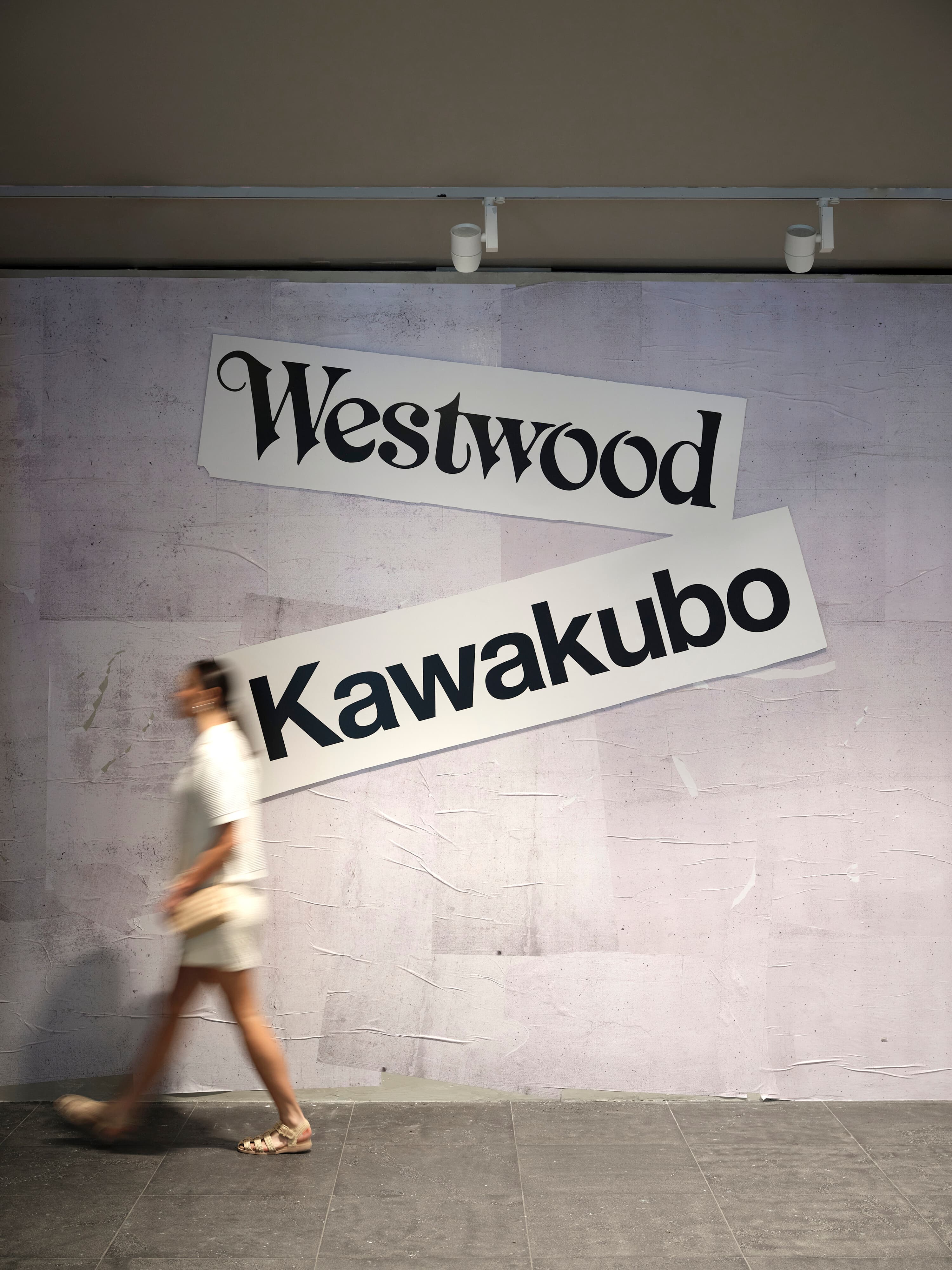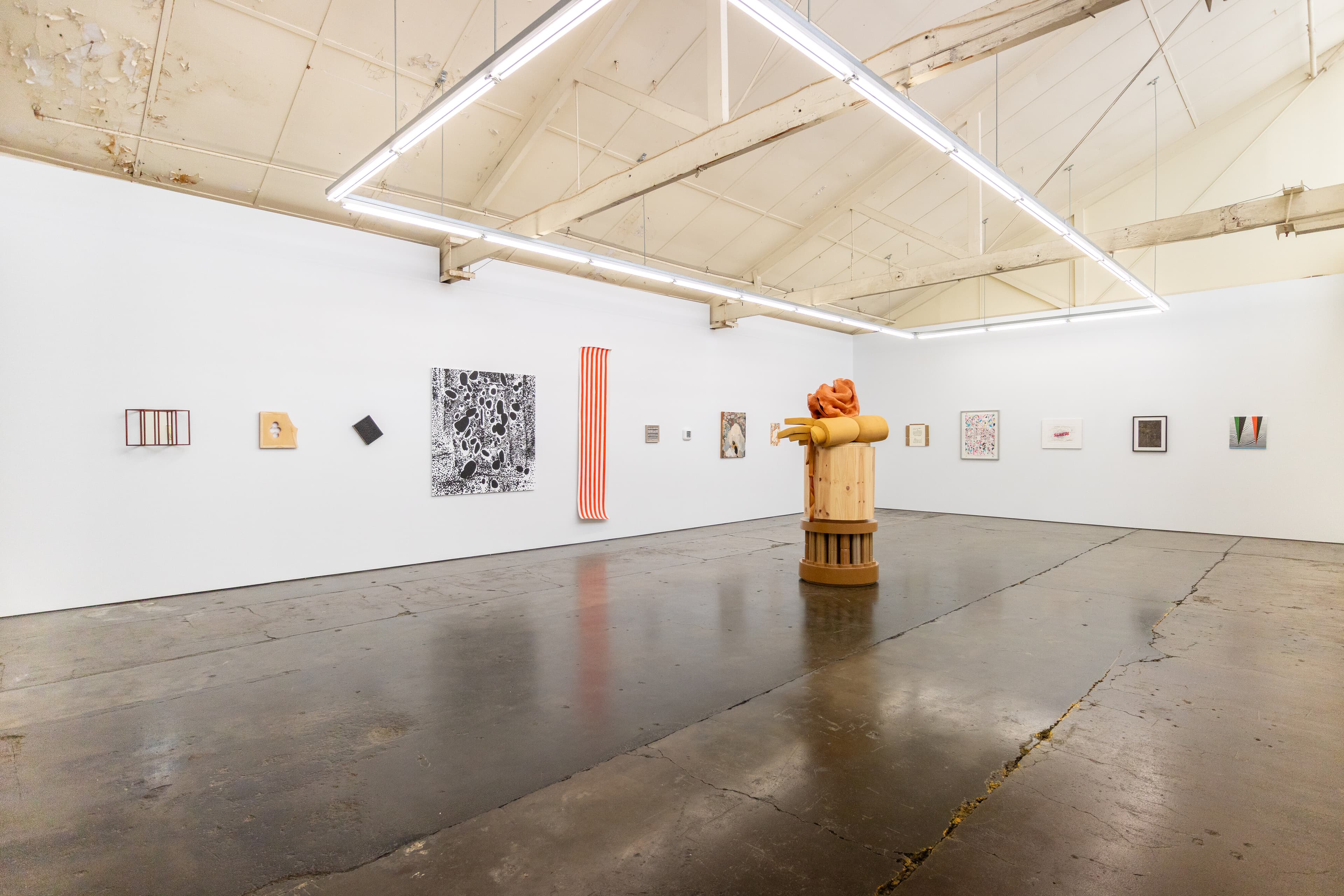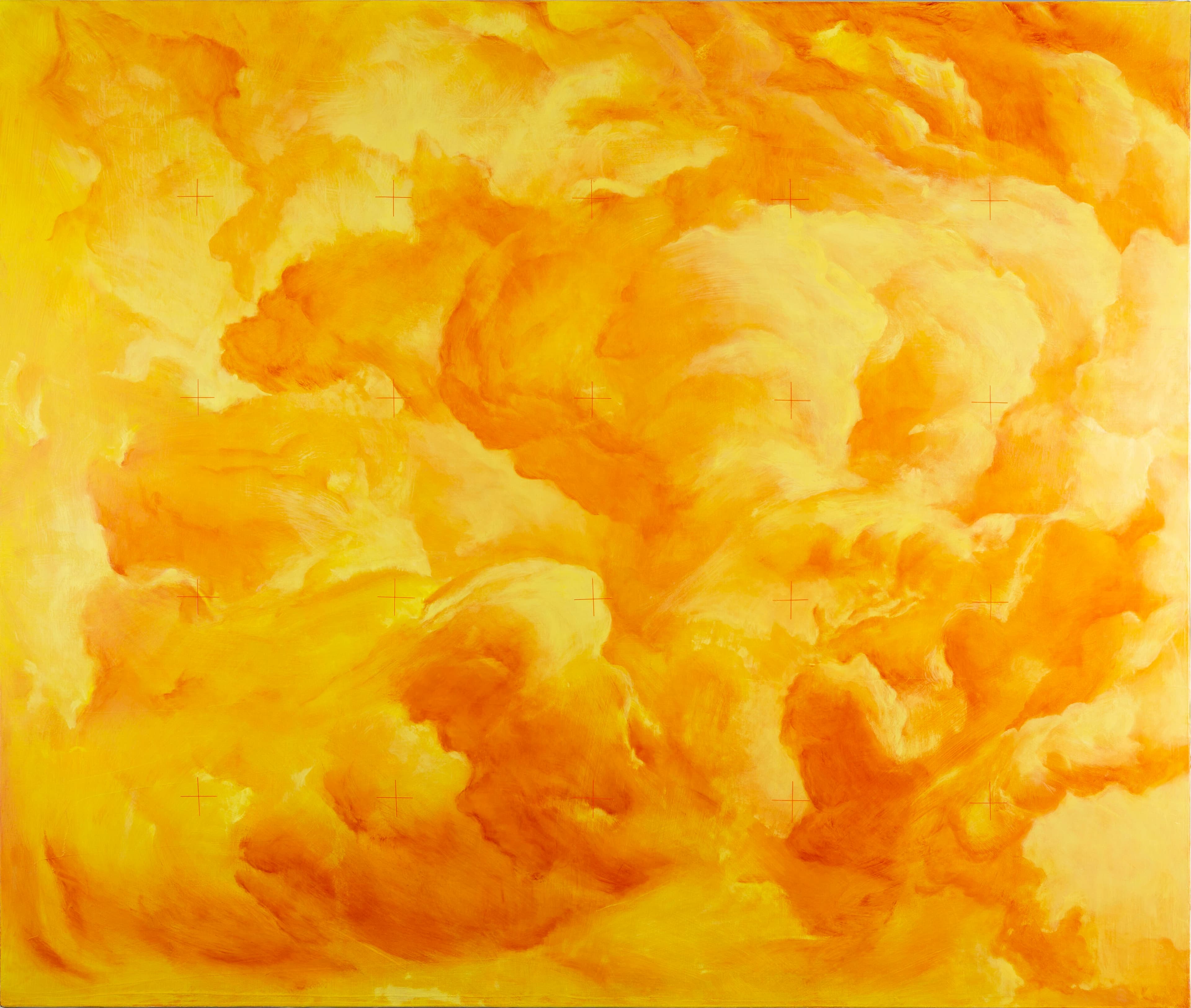Darren Sylvester: Carve a Future, Devour Everything, Become Something
Giles Fielke
Australian photography is at an interesting moment. More than ever, it is compelled to respond not only to the present reality that the average Australian is now considered either illegitimate, illegal, fraudulent, or irreparably corrupted, but also to the fact that these same problems afflict the efficacy of photography as a documentary medium. Presented as a “media” problem globally, for us this crisis of truth can be traced back to Nicholas Caire's c.1878 crystoleum print of the fairy scene at Healesville. Inaugurating Australian photography as an art form, Caire carefully composited the marvellous and the ridiculous as proximate realities.
Contemporary Australian photography still participates in this drama. With its oversize, red-velvet frame—reconstructed in 1995 by conservation and curatorial staff at the National Gallery of Victoria—Caire's work is a mysterious documentary image of a man dwarfed by impossibly enormous ferns as much as a puzzling attempt to imagine a world that is only accessible to this newly mediated, settler, reality. As I peruse Darren Sylvester's retrospective of large-scale photography, video, and installation works currently on show at the NGV's Australian galleries, I imagine a line that leads unbroken back to Caire. What is Australian about photography? Is it Australian, or is it un-Australian to take these images? Is it just consciously provincial? Perhaps it is about time.
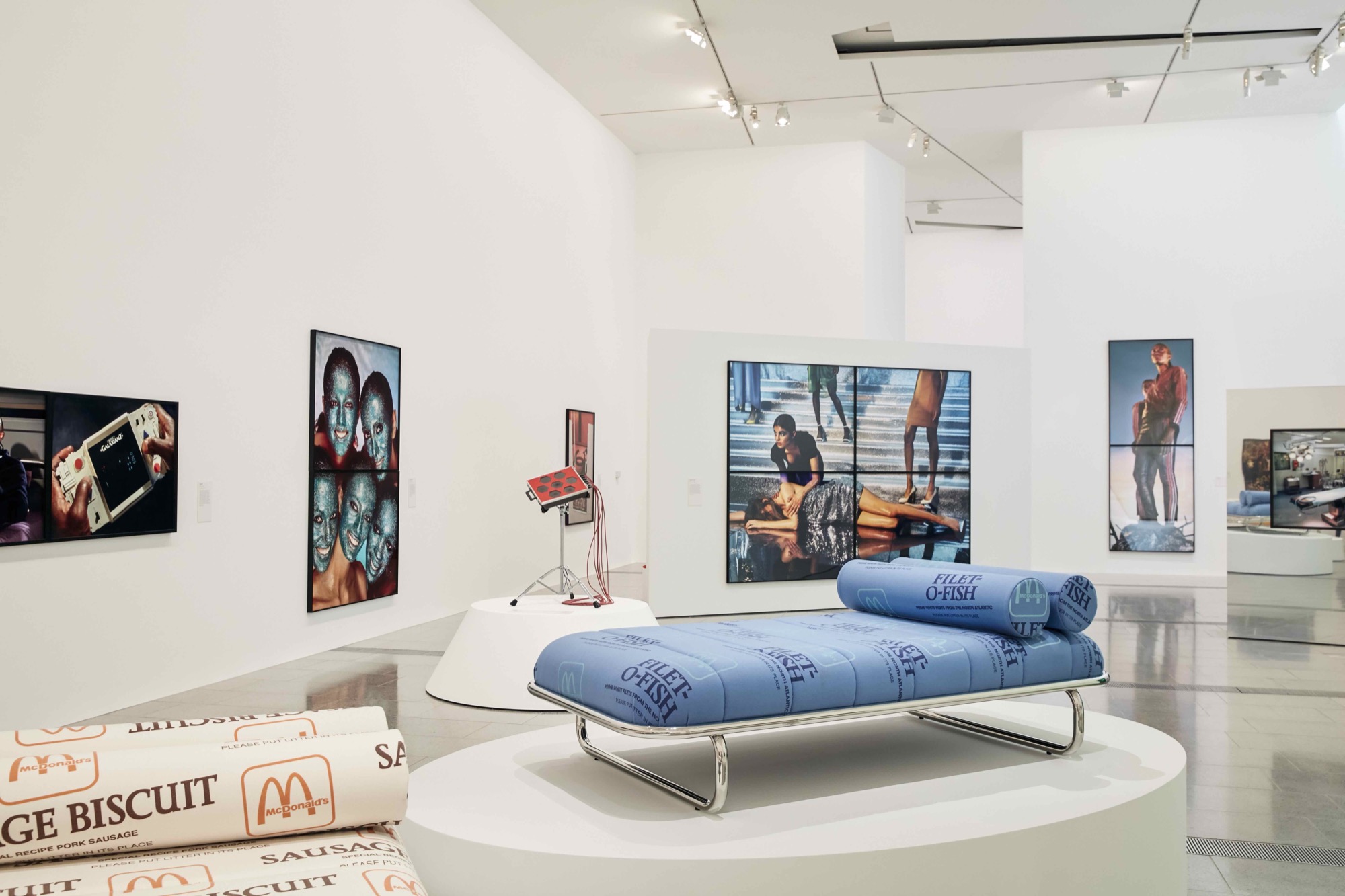
I love Darren Sylvester's work. I strongly identify with it. I see myself in these images (actually, I have been photographed by Sylvester before—fortunately the Sylvester photos I'm in didn't make the show). There is a sense of completion to his work, the resolution of an idea, of timeliness in their appearance. But his subjects are on the cusp, not quite sure of who they are, potentially proletarianised by 'social'-media, austerity politics and its effects. A large Rosslynd Piggott retrospective, I sense you but I cannot see you, has just opened opposite Sylvester's show on level three of the NGVA, of which only her early paintings from the late 1980s and early 90s are of any interest to me. Everything in Sylvester's show, however, demands my unflinching attention. It is as if these works have been made for me (or some neo-Bohemian like me).
I take a video of myself dancing in Sylvester's most ambitious work, the now infamous dance-floor installation, For You (2013, reworked 2019), which made its first appearance at the NGV's inaugural but now abandoned Melbourne Now (henceforth Triennial). The artist notes how this idea began as a series of paintings in 2001 by applying 'market tested' colours used by consumer brands to glass. It has captured the new spirit of the Australian art institution perhaps better than any other work made this century.
Sylvester's work exceeds photography, but it is as a photographer that it is most readily accessed as art. Sylvester was born in Sydney in the 1970s, when the median house prices for a three-bedroom home were under $30k. He emerged as an artist after studying in Wagga Wagga, at the time Wayne Carey was its most prominent export. He has settled in Melbourne more recently, and his work is now in the collection of Sir Elton John. The curator of this two-decade retrospective of his work, Maggie Finch (NGV Curator, Photography), has been a relatively quiet achiever in that she is often responsible for staging the more interesting exhibitions at the NGV (like 2010's Endless Present). Carve A Future, Devour Everything, Become Something, is no different for its canny attention to the details that make recent Australian photography interesting. Despite the often spectacular nature of its subject matter, Carve A Future is simple and not overly ambitious in its design.
Given its elegant display of works on the wall, on screens (strictly two-channel), and vitrines, I almost got to see all the work in this exhibition (I visited twice). Not like the Triennial, where the competitive curation piled work upon work in a fractal-disorientation inducing both nausea and vertigo. Although I didn't stick around for the whole suite of music-videos clips in Sylvester's show; I prefer to watch them on YouTube. Sylvester has released two albums of synth-pop this decade, and his new-romantic voice blends awkwardly with the pounding beats emanating from For You and throughout the gallery. It is the only element I find irritating.
David Bowie—who appears via Sylvester's re-make of the video for 'Heroes'(1977), one part of You should let go of a dying relationship (2006)—once suggested he was only interested in playing a rock-star, not being one. Sylvester's work takes its cues from this effective strategy of self-directed distantiation. In this way, Sylvester plays at being a commercial photographer, documenting and presenting the latest in consumable bodies and their adornments. This is how, for example, the four bronze masks emerge from and skirt their awkward resemblance and proximity to the “primitive” objects that so interested European Surrealists like André Breton. These “masks” are fetishes sold by pharmaceutical companies such as Procter & Gamble, hoping to capitalise on our desire to be something other than what we are right now (Devour Everything).
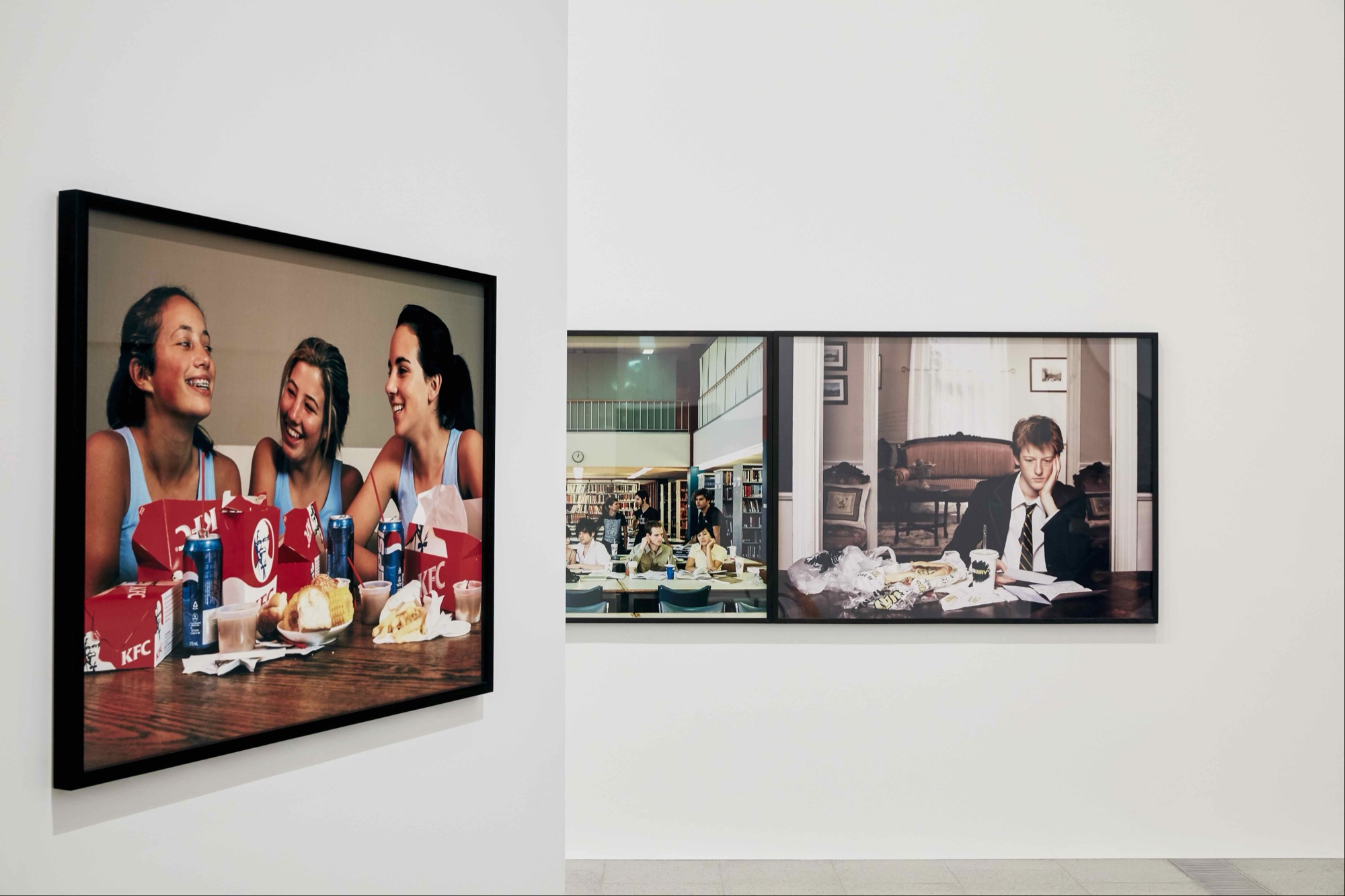
In the 21st-century — from the late Polixeni Papapetrou to Paul Yore — the production and use of photography in a specifically Australian context has remained uncomfortable and symptomatic of the divisive politics that have marred debates about representation. Is there a more awkward realisation of the aesthetic poverty of the national discourse than the senselessness of a Labor prime-minister saying that he 'couldn't stand for this sort of stuff' when asked to comment on an artwork featuring a naked child that had been reproduced on the cover of a magazine? Papapetrou's daughter, Olympia Nelson, has since become a spokeswoman for the newer identity politics, which has shocked the progressive journalists writing for Mamamia to their very hollow cores. Onecontributor, Kahla Preston, blushed at the idea of a now teenaged Nelson describing the contemporary realities of the 'sexual rat race' inaugurated by camera-phones and MMS.
While Sylvester's photography only slyly points to the vicissitudes of the endless media cycle—Broken model (2016), Green editorial (2016), Ghost story (2017)—his keen interest in surface effects gently deflates the ego-ballast required to weather the comic brutality of the “image-culture-wars”, and are redeemed by the movie-set theatrics of “nicer” works such as IKEA sunrise (2018). They appear as timely, in the sense that the toxic fallout from these debates is yet to fully materialise for a generation that has essentially been experimented on by multi-national corporations.
The show has been titled after a single, large-scale photograph from 2006 that is installed and butted up in series with four others, seemingly only loosely related by their yearning subject matter. The youthful precipice upon which the young man sits, staring out into the right of the frame (from the interior of a cheap hotel in New York), wears the influence of US-photographer Philip-Lorca diCorcia proudly on its sleeve. The ambiguity of identity, the possibility, the anticipation of becoming someone, is something that immediately permeates all of Sylvester's works; everything is on display.
Single Again, which looks like it was shot in the remnants of an inner-north house party or the beer garden of Brunswick Street's Bar Open, further inaugurates Sylvester's twin loves: portraiture and stardom. Whether it is Bowie or Kate Bush, the movie-star or actor/model, the eyes of all the figures are wide-open and full of longing for a future that is idealised yet only obliquely possible. They are looking at, and for, certain magical elements like Moon rock (2014), a quaint experiment in creating a composite specimen in a university lab to produce an elementally authentic object from space. The kitsch-glamour of this crumbling work inside a vitrine deftly humbles any sense of triumphalism in the knowing gesture Sylvester has made to 20th-century art history, the ready-made and structuralism.

The uncanny monument to the now un-accented fashion house Celine (Céline, 2017), space-suit material (Space blanket, 2012), and rock-music memorabilia (Drum machine, 2009), complete the sense that Sylvester is an artist who makes work like someone who feels out of time. In 2012, Sylvester published an artist book with Melbourne photography imprint M.33 called Compass Point. It wasa photo-essay that documented the Compass Point Studio complex in Nassau where Grace Jones and Roxy Music had once recorded, and that was then bordering on redundancy and forced to close due to increasing crime in the Bahamas (not to mention local hostility to their exploitation by the empty excesses of stardom).
The desperation of music industry careerists, which Sylvester—as an accomplished 'indie' musicians in his own right—knows only too well, proved too much at the opening of the show, when Client Liaison's producer, Harvey Miller, was photographed violating a work in the show, the re-made Oscars acceptance speech podium, Won (2013, reworked 2019), becoming a living parody of success which may one day appear as a failed attempt at redemption.
I remember getting into a fight at the McDonalds at Southland Shopping Centre one Friday night when I was about 16. My friends' “enemies” yelled 'Time to bash some Skips!' as we decided whether to stick around or leg it back to our parents' house and the relative safety of the dimly lit south-eastern suburbs. Sylvester does not shy away from exploring the disturbing realities of multiculturalism, where the only cure offered is consumerism, which suitably expands the market beyond the limitations of white Australia.
This critical ploy should also be read into Sylvester's appropriation of McDonalds burger wrapper designs printed on Danish wool and fitted to a Franz Singer styled daybed. Using Bauhaus' cool chrome-tubing, and returning to the 1930s, Sylvester 's combination of references traverses WWII without skipping a beat. McDonalds opened its first Australian store in Sydney's manufacturing suburb of Bankstown in 1971. It was founded in 1955 in California, the same year, coincidentally, as Disneyland, and the prototypical art-festival Documenta at Kassel.
I’m writing this review looking into the section of the Baillieu library at the University of Melbourne that was the setting for the 2005 photograph Our future was ours. In it, I glimpse a youthful Christian Thompson, as well as other artists and musician's I idolised as an undergraduate at the very same university. The painter of modern life is a digital media producer. It would be too easy to see Sylvester's work as a second-rate homage to the shiny excess of Jeff Koons or the assemblage chic of Isa Genzken. This is Melbourne in the naughties, and the beach is now made of purple sand dotted with brass and plastic coconuts (there are two Sylvester works outside of the gallery and I'm not sure whether they are officially a part of Carve A Future or not). I can't help thinking that as Nevil Shute's apocalypse novel On the Beach was shot here as a film in 1959, Michel Foucault may have been thinking of Melbourne when he wrote that 'man would be erased, like a face drawn in the sand at the edge of the sea,' only a few years later. Luckily, Darren Sylvester is here handing out free soft-serve ice-cream to customers leaving the Richmond Ikea. Just in time.
Giles is a writer and researcher. He is working on the Cantrills Collection at the University of Melbourne.
